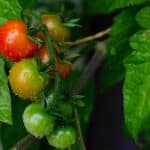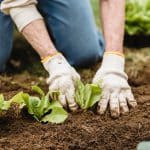Gleanr is thrilled to present yet another captivating guest contribution, brought to you by Gavin Hardy, a distinguished Churchill Fellow and the Queensland Co-ordinator of Community Gardens Australia. Gavin will be delving into his recent exploration of community agroforestry, covering a remarkable journey spanning five countries and encompassing a staggering 51 visited sites. Prepare to be inspired by his insightful findings and experiences.
In late 2022 I ventured overseas to Investigate the potential of community food forests and orchards, as a result of been awarded a Churchill Fellowship in 2020. I wanted to look at alternative models to the annual vegetable allotments and shared vegetable garden styles that dominate the Australian community food scene. The aim of my investigations was to better understand their governance, operations, designs, yields and user experiences.
The Fellowship allowed me to investigate some of the world’s exemplar community agroforestry projects, in cultures similar to Australia’s, so that the lessons learnt can be applied here. The trip took me to five nations – USA, Canada, UK, The Netherlands and Italy – and over nine weeks I met the key people and recorded the sites associated with ten ground breaking projects. I also came across other projects as I travelled, that were not planned for or included in my itinerary, and ended up visiting 51 sites.
Highlights
There were many ‘wow’ moments. Harvesting and gardening events in Seattle, Victoria BC, London and Rotterdam were such fun and so full of connection that I had visceral experiences of the physical and mental health benefits of community orchards. This experience was validated by the stories I got from other participants and from a visit to a large orchard in a psychiatric hospital in London. In Miami, I met children who told me that their school’s food forest is helping them learn about science and maths, gardening and nutrition. In Italy, I was given a master class on the urban biodiversity benefits of community food forests. And I was blown away by yields of tens of thousands of kilograms that groups are harvesting from urban orchards. I had amazing insights with world’s leading food forest designers in the USA, the UK and The Netherlands. And I learnt how not-for-profits provide services, motivate volunteers and sustain livelihoods for their staff.
Insights
The number of community-based food forests and orchards can be scaled up across whole regions using either multiple site service provider or urban orchard service provider models.  My research provided major insights into the benefits to food sustainability, health and wellbeing, urban rewilding and community capacity building. I received key lessons on overcoming familiar challenges in the community gardening space including obtaining funding, sustaining livelihoods, maintaining volunteer involvement, harvest and distribution techniques, user experience, legibility and context.
My research provided major insights into the benefits to food sustainability, health and wellbeing, urban rewilding and community capacity building. I received key lessons on overcoming familiar challenges in the community gardening space including obtaining funding, sustaining livelihoods, maintaining volunteer involvement, harvest and distribution techniques, user experience, legibility and context.
Partnerships and Funding
Many of the larger groups I visited have created innovative funding arrangements by positioning themselves as ‘enabling organisations’. They invest a lot of resources into building partnerships within the charitable food, education, environmental conservation, sustainable agriculture, and/or health and well-being sectors. The community food group leverages off these relationships by demonstrating how they assist their partners to achieve their goals. This in turn attracts funders who see the community food group as an enabler of better futures in the wider community.
 Orchard and food forest groups are also partnering with universities to build the evidence base and to improve practices. Food processing partners such as commercial cideries, preserve makers and high end restaurants are also in on the activity. The community food groups are also earning revenue by hosting gourmet dinners and tours, providing courses and workshops, consulting to government and business, doing fresh produce sales, offering tree care service and jobs training programs.
Orchard and food forest groups are also partnering with universities to build the evidence base and to improve practices. Food processing partners such as commercial cideries, preserve makers and high end restaurants are also in on the activity. The community food groups are also earning revenue by hosting gourmet dinners and tours, providing courses and workshops, consulting to government and business, doing fresh produce sales, offering tree care service and jobs training programs.
My recommendations for Australia:
- Community Organisers – the Multiple Site Service Model allows a group to potentially support hundreds of community food forest and/or orchard projects across entire regions. Also, the Urban Orchard Service Provider model allows not-for-profits to sustainably harvest and distribute fruit from a region’s existing stock of fruiting trees, shrubs and vines. These models are sustained through funding and partnership arrangements that create realistic livelihoods whilst providing a low or no cost core service.
- Site coordinators and designers of community food projects will benefit from learning about the ways that the leading groups overseas keep volunteers interested and build united groups. Some of the leading projects incorporate community planning processes and design features to enhance participation and understanding. All of the community food forests incorporate a diversity of edible plant and support species, and micro-habitats, to create resilient systems.
- School administrators and teachers who already have, or are planning, an edible school garden could learn about how groups overseas provide on-the-ground implementation and maintenance support to create resilient food projects.
- Planners and program officers – in community development and/or urban agriculture policy frameworks, could adopt a wider ‘community food systems’ approach that expands beyond community gardens and includes food forests and orchards.
-
Next steps
Coming back to Australia, I am now working on creating a Community Food Practice Manual that provides detailed guidance on the successful delivery and management of community food projects and programs in all their forms including food forests and orchards. In the medium term I want to create a Community Orchard not-for-profit that helps other groups create orchards throughout a region or city. I’m looking for collaborative and funding opportunities so please reach out!
ABOUT GAVIN HARDY
For 25 years Gav has been creating, teaching and writing in the areas of permaculture, environmental design and ecological sustainability, particularly in subtropical Australia. He co-created Eco-flat Brisbane, a remarkable example of urban sustainable living, and is a founder of – and regular contributor to – Northey Street City Farm. He has planned, designed and built numerous sustainable landscapes in Australia, the UK and Europe.
Gavin is a Churchill Fellow specializing in community agroforestry and is the Queensland coordinator of Community Gardens Australia. He studied permaculture under the tutelage of Bill Mollison (PDC1997), Robin Clayfield and David Holmgren.
To find out more about Gavin’s work reach out to his LinkedIn page
www.linkedin.com/in/gavhardy/ or visit his YouTube channel using this handle @hardypermaculture





